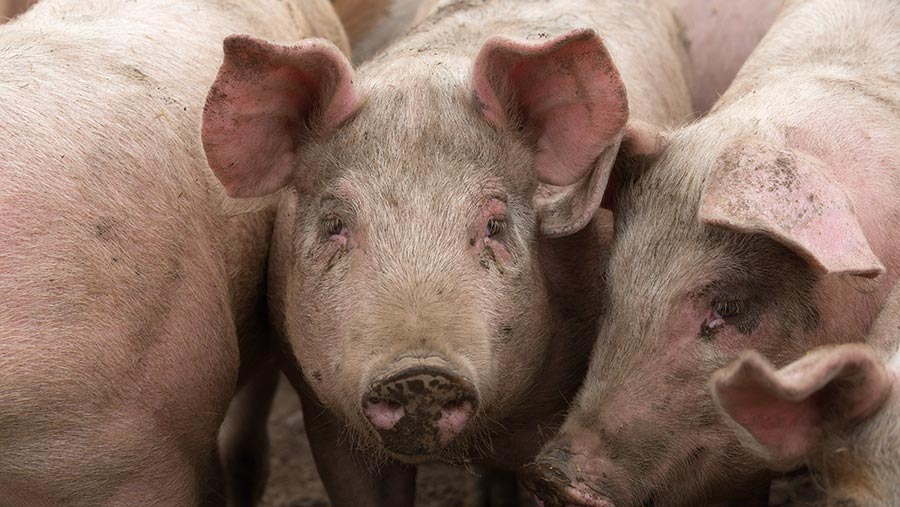Ileitis in pigs: How to spot it and deal with it
 © Tim Scrivener
© Tim Scrivener When left unmanaged, ileitis in pigs can cause reduced liveweight gain, diarrhoea and even death.
And with the bacteria responsible for the disease thought to be present in some form on all pig farms, effective treatment and prevention is critical.
Below, vet Dawid Karpiesiuk of Garth Pig Practice explains what ileitis is and why it is so important for pig farmers to control it.
See also: Pig health and welfare underpin herd expansion
What is ileitis?
Ileitis – sometimes known as porcine proliferative enteropathy – is a disease caused by the Lawsonia intracellularis bacteria, which causes damage to the small intestines. It is a very common bacteria and can be found on up to 100% of pig farms.
Symptoms are similar to other enteric diseases and vary depending on the type of infection. Sometimes there are no clinical symptoms at all, which is why it is often overlooked on farm.
There are three typical presentations of ileitis: acute, chronic and subclinical. Subclinical is the most common type identified on farms.
What are the symptoms?
Slow growth rate – despite normal feed intakes – is often a visible sign of ileitis. This may even be seen in subclinical cases.
Symptoms in chronic cases include slightly looser stools and variation in size of pigs between groups.
Acute ileitis tends to be a haemorrhagic form of the disease and is associated with high mortality.
How is it diagnosed?
As the bacteria is present almost everywhere, diagnosis should be based on the clinical picture.
This means testing to find out the number of bacteria present in a pig to confirm a case of ileitis.
Clinical tests include post-mortem examinations and lab testing based on blood sampling.
It is also possible to take a biopsy of the ileum wall to look at the pathology or use a quantitative PCR test.
Another diagnostic tool is serology, which allows us to find antibodies in the blood.
How is it treated?
Once a case of ileitis is confirmed, it can be treated with antibiotics. Two main types are used: tylosin and tetracycline.
There is no specific treatment for subclinical cases as often these are undetected by farmers and vets. Therefore, it is more important to focus on prevention.
Can it be prevented?
Basic biosecurity measures should be implemented on all pig units as part of a prevention plan for ileitis.
This includes changing into new, clean clothes when entering a unit and foot dipping before going into and between buildings.
Thorough washing down and disinfection between batches should also be ensured.
Farmers should also avoid mixing various age groups where possible as this can increase stress levels in pigs, which in turn could make a subclinical case develop into a clinical one.
In addition, any gilts entering the farm should be quarantined before joining the herd.
Vaccines can be used to protect pigs and can be used from three weeks of age.
There are two types of vaccine available – one delivered via water and one as an injection.
These provide effective control of the ileitis bacteria for up to 20 weeks.
